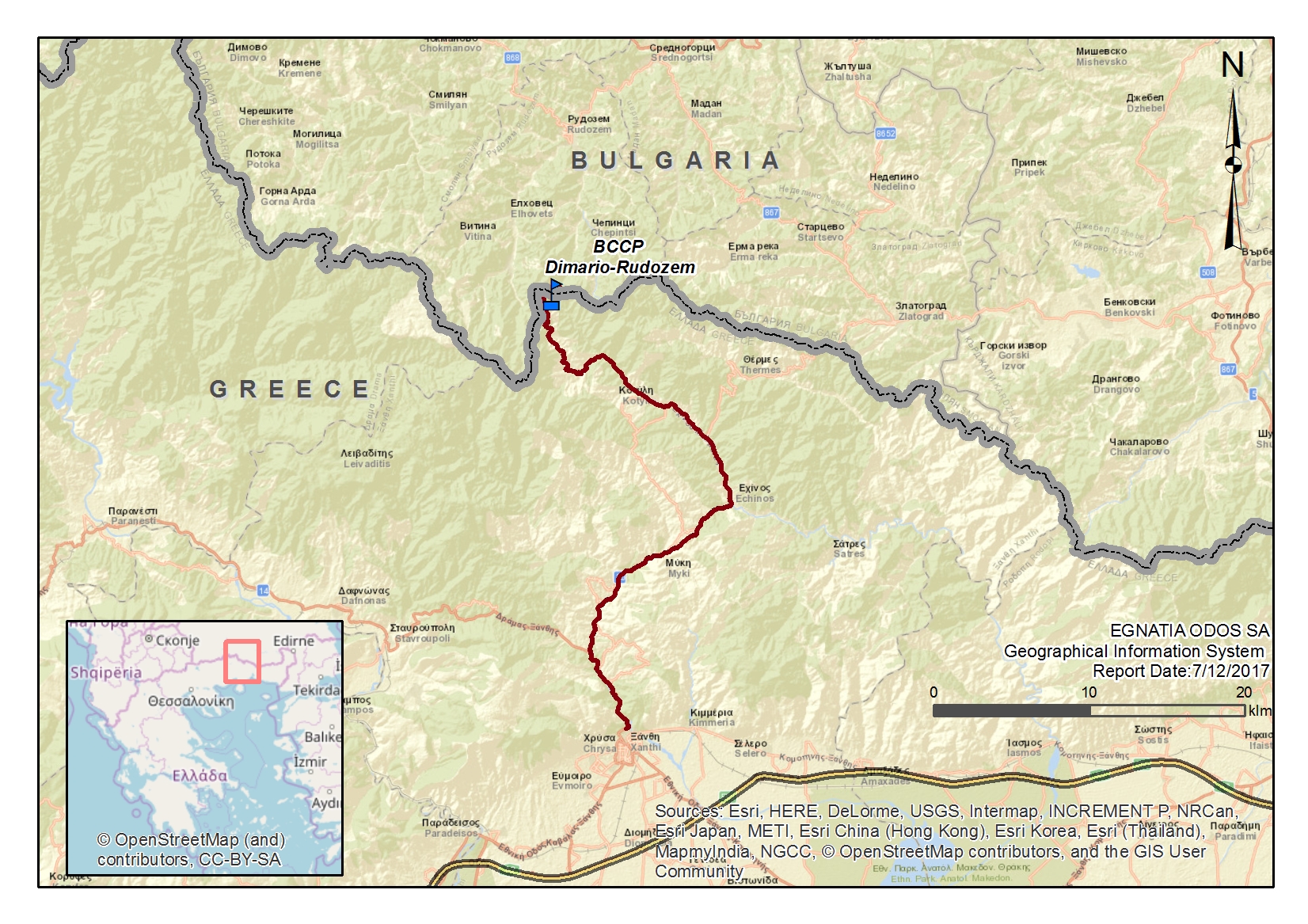
VA Xanthi-Echinos-Greek-Bulgarian Borders
- ΑΡΧΙΚΗ
- »
- PROJECTS
- »
- VERTICAL AXES
- »
- VA Xanthi-Echinos-Greek-Bulgarian Borders
VERTICAL AXES
The vertical axis “Xanthi-Echinos-Greek-Bulgarian borders” will contribute to the development of the relations between Greece and Bulgaria, entailing important financial benefits, as commercial and other activities will be developed in Xanthi, Thrace and the inland of Bulgaria (Smolian, Filippoupolis etc). The will to put this axis into effect was expressed with the signing of the Bilateral Agreement Protocol between Greece and Bulgaria, in 1998.
Technical Characteristics
The Bilateral Agreement between the two countries has determined the road’s basic technical characteristics for the whole axis, such as its standard cross-section (7.5/10.5 m. width) and design velocity of 60 km/h, in both Greek and Bulgarian ground. In the Greek Territory, the axis is approximately 49 km long, of which 40 km of the existing road (section Xanthi-Echinos-Dimario) present reduced geometrical characteristics (velocity Ve=30 km/h approximately), while for the next 9 km (Dimario Greek-Bulgarian boarders) there is only one forest earth road.
In 2006, EGNATIA ODOS A.E. was appointed as the Agent responsible for putting into effect section “Melivoia-Dhmario -Greek-bulgarian Boarders”. After reviewing the existing designs and proceeding with in situ visits, several important geological-geotechnical problems have been encountered. To this day, we have been examining an alignment further to the west, in the area of Dimario (approximately 9 km long). These kilometers add to the 10 km of the improvement of section “Melivoia-Dimario”, so as to achieve the cross section and velocity specified by the Interstate Agreement.



